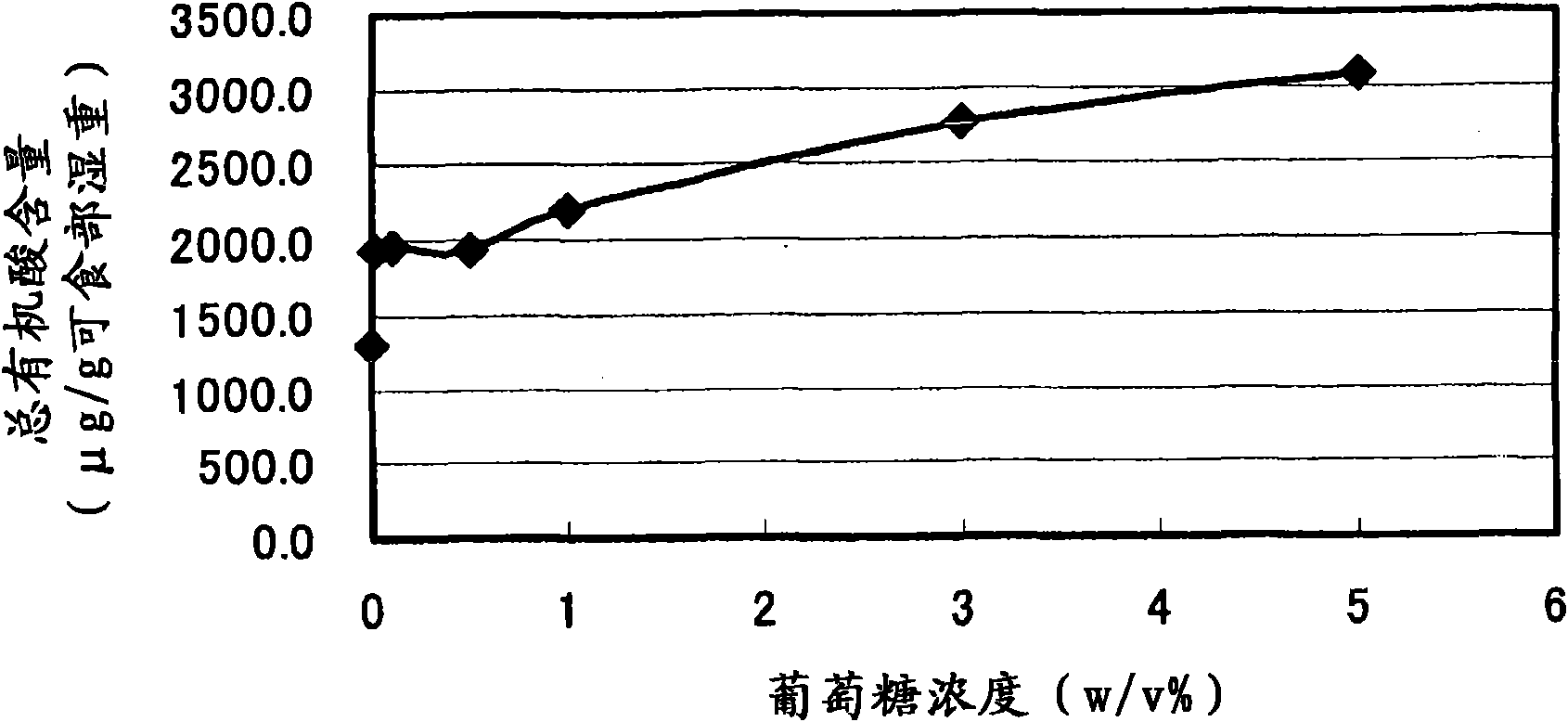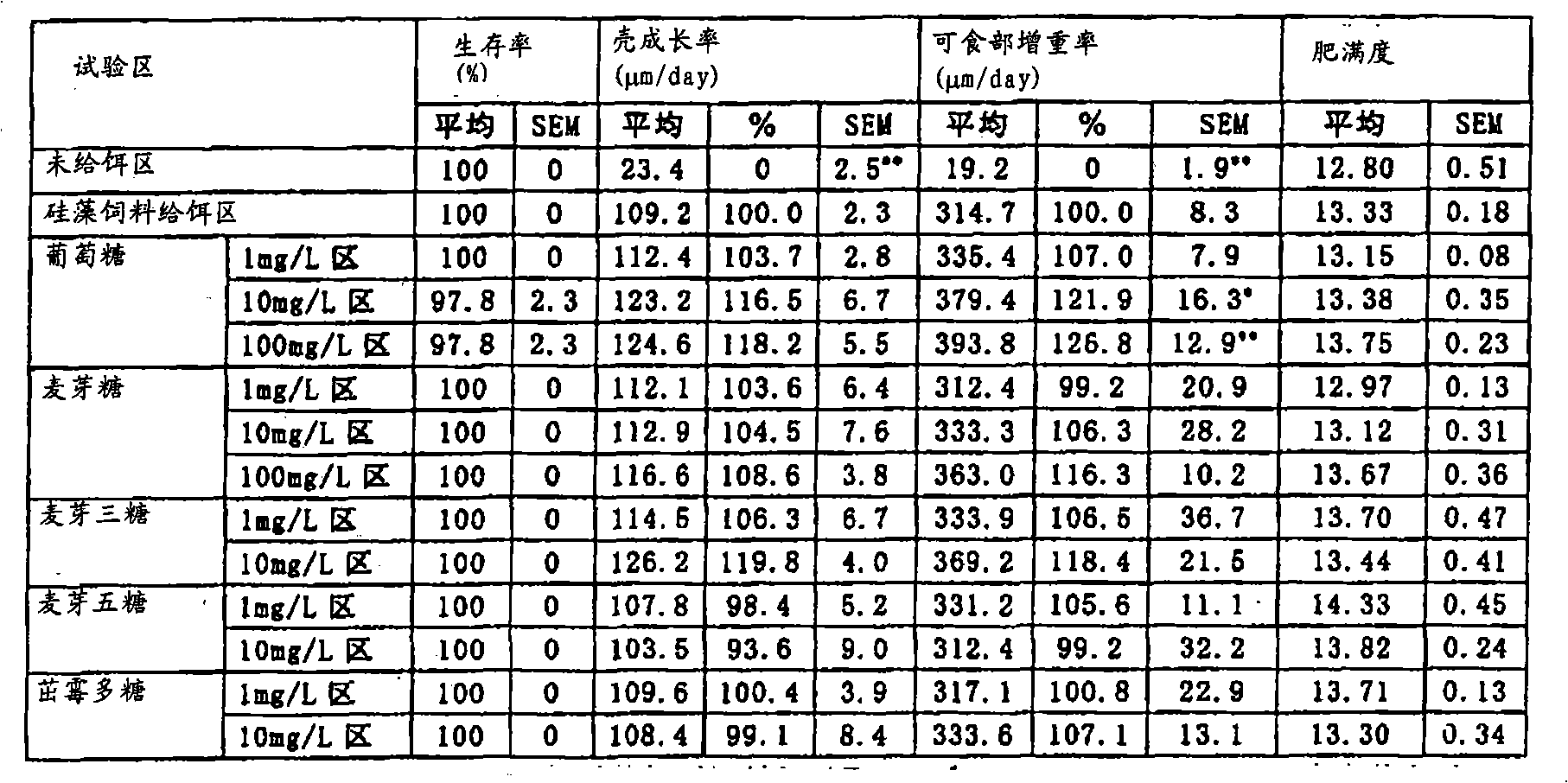Method for feeding bivalve with bivalve feeding agent
A technology of bivalve and feeding agent, which is applied in the field of bivalve feeding method, can solve the problems of low concentration, no increase of bivalve growth and flavor components, and no proof of bivalve, so as to prevent emaciation Effect
- Summary
- Abstract
- Description
- Claims
- Application Information
AI Technical Summary
Problems solved by technology
Method used
Image
Examples
Embodiment 1
[0051]
[0052] 1. Sample
[0053] 1) Clams
[0054] The Hakata Island Cultivation Technology Development Center of the Seto Inland Sea Fisheries Research Institute of the Independent Administrative Legal Person Fisheries Research Institute, after harvesting eggs, artificially reared clam shellfish seedlings (365-day order, shell length 7.5mm-9.5mm, plumpness 15.9 ), with an average shell length of 8.49mm, 15 pieces were selected and put into the water tank as a group.
[0055] Raising, using a cylindrical polystyrene water tank with a volume of 5L, using filtered natural seawater, and feeding for 22 days while aerating (average water temperature 24.7°C, average salinity 33.0‰, average pH 8.1, average dissolved oxygen 6.7mgO 2 / L). The feeding conditions are: at 9 o'clock in the morning, the diatom bait キ-トセロスカルシトランス (Nissin サイエンス, trade name Suncalcha-) is administered once to reach a concentration of 80,000 cells / mL in still water until 16:00 After ingesting bait for 7 ...
Embodiment 2
[0071]
[0072] 1. Sample
[0073] 1) Clams
[0074] We purchased clams (average shell length: 35.0 mm) from the storage tank of Hamageho Fishery in Hiroshima Prefecture. Place them overnight in a tank with natural seawater flow for domestication, and select normal individuals that have opened their shells for feeding experiments.
[0075] 2) Bivalve mollusc feeding agent
[0076] D-glucose (a monosaccharide with a molecular weight of 180 and a purity of more than 98%) is used as a feeding agent for bivalve molluscs.
[0077] 2. Confirmation test of osmotic pressure resistance
[0078] Pour natural seawater (salt concentration 3.0%) into a 5L volume plastic cylindrical water tank, dissolve and administer D-glucose as a bivalve feeding agent to 0.01w / v% (100mg / L), 0.1w / v% (1000mg / L), 0.5w / v% (5000mg / L), 1w / v% (10000mg / L), 3w / v% (30000mg / L), 5w / v% (50000mg / L). In addition, as a control, a test area in which D-glucose was not administered was provided.
[0079] Three wat...
PUM
 Login to View More
Login to View More Abstract
Description
Claims
Application Information
 Login to View More
Login to View More - R&D
- Intellectual Property
- Life Sciences
- Materials
- Tech Scout
- Unparalleled Data Quality
- Higher Quality Content
- 60% Fewer Hallucinations
Browse by: Latest US Patents, China's latest patents, Technical Efficacy Thesaurus, Application Domain, Technology Topic, Popular Technical Reports.
© 2025 PatSnap. All rights reserved.Legal|Privacy policy|Modern Slavery Act Transparency Statement|Sitemap|About US| Contact US: help@patsnap.com



